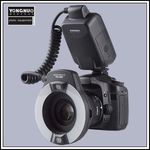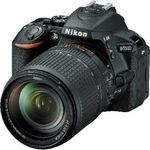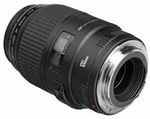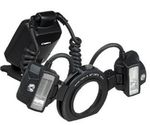Camera Recommendation for Dental Photography August 2018
←
→
Page content transcription
If your browser does not render page correctly, please read the page content below
Camera Recommendation for Dental Photography
August 2018
124 Edward Street, Room 346 Toronto, ON, Canada M5G 1G6
Jeff Comber, Senior Photographer: Tel: 416-864-8130 Email. Jeff.comber@dentistry.utoronto.ca
Rita Bauer, Bauer Seminars: Tel. 905-264 9524 Email. rita.bauer@dentistry.utoronto.ca
Introduction
The digital camera is a necessary tool in every dental practice. The type of digital camera system
necessary will depend on the work being done and the output being produced. A Digital Single Lens
Reflex, or DSLR, camera system is required for high quality close-up macro photography. All cameras
require a very specific set-up for clinical dentistry photography. The proper exposure set-up and flash
calibration will only be provided through photography courses or through purchases from Dental
Photography suppliers. Contact Bauer Seminars, Carestream Dental, Dine Corp, Henrys Commercial
Division, PhotoMed and Norman Cameras. If you are purchasing equipment through a regular camera
store, it still needs setup before use in a clinic.
DSLR’s:
Basically all DSLR camera bodies will produce great results. You can obtain excellent clinical views
from entrance level DSLR’s because they still have enough function settings for superior dental
images. Higher end models will also offer amazing results but are much heavier, which can be an
issue for dental photography.
A Ring Flash or Ring and Point Flash combination mounted on the front of the lens is required for any
intra-oral photography.
“POINT AND SHOOT” SMALL CAMERAS:
Most “point and shoot” cameras cannot provide clinically correct photographs. Only a select few models
have the proper combination of flash placement, macro options and depth of field capabilities. The models
discussed below have been thoroughly tested and are guaranteed to take great clinical photos when the
proper settings are used.
When using a ‘Point and Shoot’ camera for dental photography please note:
Very good images can be obtained, however the views cannot be 100% standardized. This is because the
camera will obtain focus no matter what the distance from the camera to the subject is. Also, colour
rendition is not going to be consistent due to the differing lighting conditions of the room.
MIRRORLESS DSLR SYSTEMS:
These cameras are currently only useful for hobby photography. While the small size of the camera is
very appealing, and close up views can be obtained with some of the lenses, the problem comes when
lighting the objects. I have not found a flash for these cameras that will allow for a well-lit intra- oral
photograph without shadows. Hopefully this will change in the future.LENSES:
The lens required is dependent on the views necessary:
• 90mm, 100mm or 105mm macro lens extreme close-up, up to 2 teeth
• 85mm macro lens up to a quadrant
• 60mm macro lens no smaller than a full mouth
While all these lenses allow you to focus on very small areas, it also means that the working distance
between the lens and the subject is very short. This means that using lenses with a shorter focal
length, can result in the lens and the flash touching the cheek of the patient, if you try to get an
extreme close up view.
Restorative Dentists, Cosmetic Dentists, Prosthodontists and Periodontists, need this type of camera
system, because of the extreme close up views, colour accuracy and definition that must be
documented for this type of dentistry. Orthodontists can use a 60mm macro lens, because they typically
document only the full mouth.
Canon Camera Body Recommendations:
The Canon EOS 2000D (Rebel T7) and Canon EOS 1300D (Rebel T6) are the first choice as a DSLR system.
They are a substantially smaller, lighter and less expensive SLR camera compared to other models and offer easy
exposure calibration and consistent results.
Older Canon camera bodies are also recommended but are harder to find as they are discontinued. They
are: Canon Rebel series T5, SL1, T5i, T6s, T3i, and T4i.
(Please note: The grip on the T5i is smaller and can be hard to hold if you have large hands however, any
upgrades to a higher end model will add a significant amount of weight to the system so it’s important to
find out what works best for you.)Canon Lens recommendations:
1. Canon EF 100mm f/2.8 Macro USM Macro lens (approx. $600)
Please note: You do NOT need the Canon EF 100mm F2.8 “L IS” USM
Macro lens with the VR function which costs over US$1000. Vibration
reduction is only required if you take photographs in low light and
without flash. This model is also heavier than the earlier model USM
Macro lens.
2. Canon EF-S 60mm f/2.8 Macro USM Lens - Less expensive and lighter than the 100mm macro
lens, however this lens will only work well for close ups no closer than a full mouth view. Closest
recommended view is only the full mouth due to the short working distance. The flash will touch the
patient’s cheek if close ups of posterior teeth are required. This short working distance will result in
slightly barrel shaped, distorted images on both facial and intra oral views.
Canon Flash Systems:
Canon Ring Lite MR 14EX II or the previous model, Canon Ring Lite
MR-14EX – These Canon flash systems are totally integrated and are, in
my opinion, the easiest system to calibrate and standardize for dental
photography. Don’t try to save money by purchasing a cheap ring flash
or ring light. It is always very difficult to calibrate, and it is quite often
impossible to get consistent exposures with a sufficient depth of field.
Canon MT-24EX Twin Light Macro Flash – This item is discontinued and
very cumbersome to use. Not recommended for a fast paced work flow.
Third Party Flash Systems for Canon:
Yongnuo YN-14EX-C– These Ring Lite units look similar to the
Canon Ring Lite but are about one quarter of the cost. However,
the light output tends to be inconsistent resulting in over/under
exposed images. This flaw can really show down your workflow.
The money saved on this item needs to be weighed against the
additional time and aggravation needed to get the right shot.
Buyer bewarePentax (Ricoh) Systems:
Pentax K-50 – Although this item is discontinued, this Pentax body is a great option if it can be found.
Other, still current body options such as the K-70 are sufficient but they cost more money. A Pentax
body, used with the Pentax 100mm macro lens and the Pentax AF 160FC Macro Ring-light (now also
discontinued) create a dedicated system, not unlike Canon, that is more affordable. However, because the
K-50 and Ring Flash are now discontinued, it may only be available through sites such as ebay.com
Pentax K-50 (discontinued) Pentax 100mm Macro Lens AF 160FC Macro Ringflash (discontinued)
Nikon Camera Body Recommendations:
Currently the best choice is the Nikon D3400 (because of the reasonable price) however, the D5600 is
also sufficient. The following discontinued models are also great options if they can be found: D5500,
D5300, and the D3300
(Please note: Nikon no longer manufactures
its own Ring-light. Read on for lighting
alternatives)
Nikon Lens Recommendations:
1. Nikon 85 mm macro lens - very light but is not capable of achieving extreme close-ups.
2. Nikon 105mm macro lens – versatile lens made with excellent quality, but is heavy.
Recommended Lens Alternatives:
The Tamron 90mm or Sigma 105mm macro lens are some alternatives that can be considered. They are
available for both the Canon and Nikon systems and typically are less expensive than the Canon and
Nikon lenses.
Please note: any 60mm macro lenses should be used with CAUTION. The short working distance will
result in a distorted “barrel shaped” image for both the facial and intra-oral views. Closest
recommended view is no smaller than a full mouth, due to the short working distance.Please note: the 18-55mm lens (that often comes with a purchase of a camera body kit) should NOT
BE USED. While this lens is ok for hobby photography, it is not appropriate for dental photography.
The smallest image that can be captured using this lens is a full mouth set at 55 mm. The short
working distance results in barrel shaped distortion for both the facial and the intra oral views.
Other Recommended Flash Systems:
Dine- Mini MacroDual Ring/Point or Ring flash from www.dinecorp.com The Dine Ring flashes work
well with Nikon cameras using the Nikon 85mm macro lens or the Tamron 90mm lens. This flash is a
Nikon product, so the exposure
integration with the Nikon camera is
excellent. Exposure set up instructions
are supplied by Dine Corporation and
the technical support system is
excellent.
The Sigma EM-140 DG Macro Ring Flash works well with recent camera
models, but it is very difficult to calibrate the exposure settings when used
with older model cameras. If you are experiencing inconsistent exposure
results, contact the distributor as your flash may require re-programming.
(You will need to provide them with the make and model of your camera.)
Nikon has discontinued their ring flash and
replaced it with the Nikon R1 macro flashes
which are attached at the front of the lens.
The downside of this system is that the
positioning of the flashes require a lot of
attention to detail to get good photographs
and is therefore very cumbersome and heavy to use by a dental team in a fast paced practice. The
extended flash brackets make it even more awkward to handle. Also they require Lithium batteries for
the two flash units, making this a very expensive operating system.
Metz Mecablitz 15 MS-1 wireless macro flash – a decent alternative, however
achieving a consistent colour correction proves to be difficult. It also requires
an extensive exposure calibration as the images appear very flat.A warning regarding low quality ring flashes and LED ring lights:
Low cost ring flashes (such as the Bower macro ring flash) and LED ring lights (such as the Amaran Halo
LED light or the Polaroid LED ring flash) cannot be used for dental photography when used with a DSLR
camera system. The light output is not powerful enough to properly expose images (taken at f-32 or f-
22) for maximum depth of field, thus ensuring sharp focus for all teeth in the intra-oral image.
Current “Point and Shoot” Camera Recommendation:
Current recommendation for 2018 – CLINI-CAM
(Available from www.downtowncamera.com)
The CLINI-CAM is the best small camera on the market
today. It is light and easy to use, making it perfect for
a busy dental practice. The CLINI-CAM Dental Camera
comes pre-programmed with two custom settings
(Intra-Oral and Extra-Oral) for perfectly exposed
images. It is shock-proof as well as water-proof, making these cameras very durable and easy to sanitize.
The powerful macro setting allow you to capture exceptional intra oral and mirror views as well as great
extra-oral images and portraits.
Recommended Discontinued “Point and Shoot” Cameras.
The following cameras are no longer available in stores but can still sometimes be found on websites like ebay, craigslist or kijiji.
- Olympus TG-4 or TG-3
- Canon Powershot G16 (Must have a Canon ring flash with adapter ring to achieve shadow free
images.)
- Canon Powershot G12 (With the correct exposure and zoom setting this camera will provide
distortion free and shadow-less images, without an additional flash system.)You can also read



























































